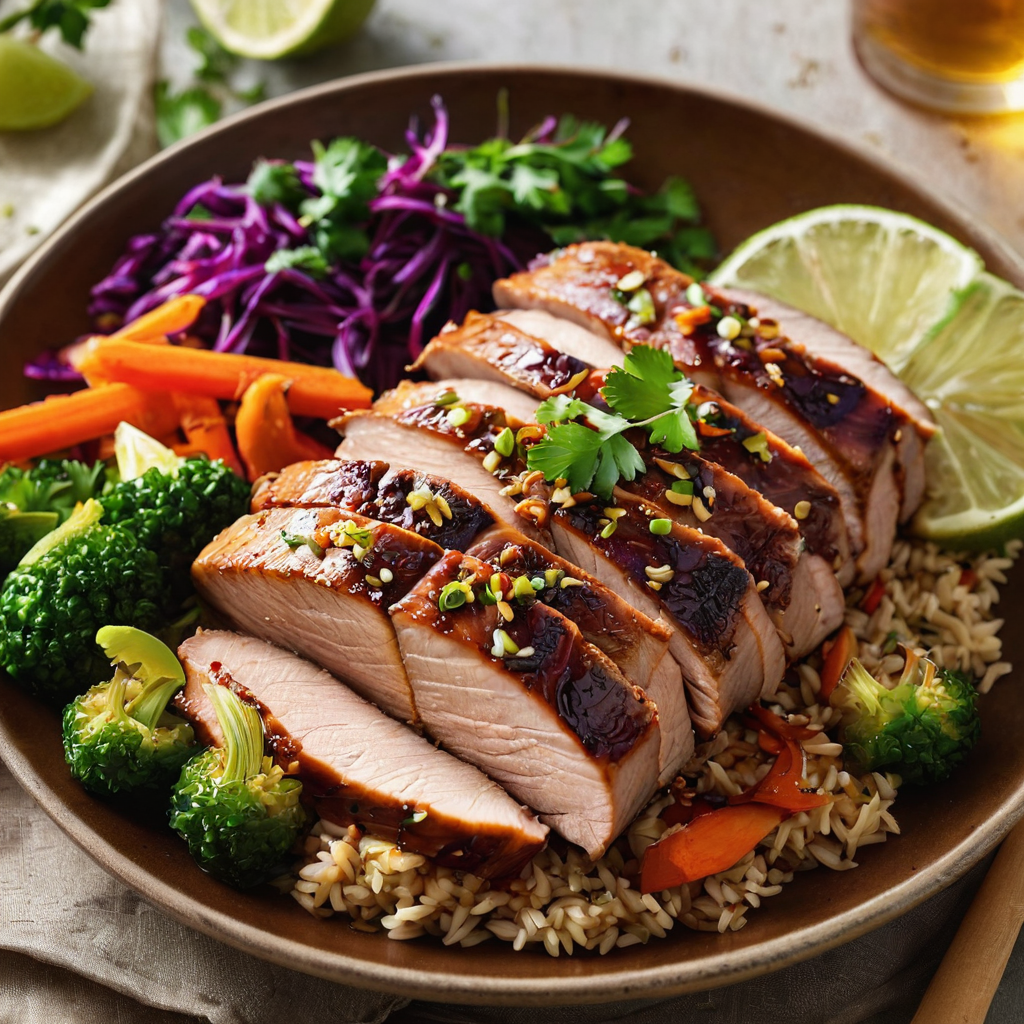A Delicious and Tender Main Dish
Braised Pork Loin is a classic dish that is both simple and elegant. It is a perfect choice for a Sunday family dinner or entertaining guests. Braising is a cooking technique that involves browning the meat in a pan and then cooking it slowly in a liquid until it is tender and flavorful. Pork loin is an ideal cut of meat for braising because it is lean and tender, and it absorbs flavors well.

To make Braised Pork Loin, you will need a few basic ingredients such as herbs, wine, onion, garlic, and stock. The cooking process is straightforward, and the result is a moist and tender meat that is bursting with flavor. You can serve it with a variety of side dishes such as roasted vegetables, mashed potatoes, or polenta.
There are many variations of Braised Pork Loin, and each recipe has its unique twist. Some recipes use apples and onions, while others use Dijon mustard and fresh herbs. No matter what recipe you choose, Braised Pork Loin is a delicious and satisfying meal that will impress your guests and leave you feeling satisfied.
Choosing the Right Cut of Pork

When it comes to braising pork, choosing the right cut is crucial. The right cut will not only ensure that your dish turns out delicious but also save you time and money. Here are some things to consider when selecting the perfect cut for your braised pork loin.
Pork Loin Characteristics
Pork loin is a popular cut for braising because it is lean, tender, and flavorful. It is also easy to prepare and cooks quickly. Pork loin can be purchased bone-in or boneless, and either way, it is a great choice for braising. The bone-in option will add extra flavor and moisture to your dish, while the boneless option is easier to carve.
Alternative Cuts for Braising
While pork loin is a great choice for braising, there are other cuts that can be used as well. Tougher cuts of pork, such as pork shoulder or pork butt, are ideal for braising because they contain a good amount of fat and connective tissue, which break down during the braising process, resulting in succulent, melt-in-your-mouth meat. Pork belly is also a popular choice for braising because it is fatty and flavorful.
Here is a quick comparison of some popular cuts of pork for braising:
| Cut of Pork | Characteristics |
|---|---|
| Pork Loin | Lean, tender, and flavorful |
| Pork Shoulder | Tough, fatty, and flavorful |
| Pork Butt | Tough, fatty, and flavorful |
| Pork Belly | Fatty and flavorful |
When selecting your cut of pork, consider the amount of time you have to cook, the level of fat you prefer, and the overall flavor profile you are looking for. No matter which cut you choose, braising is a great way to turn tough cuts of pork into a delicious and tender meal.
Essential Ingredients for Braising
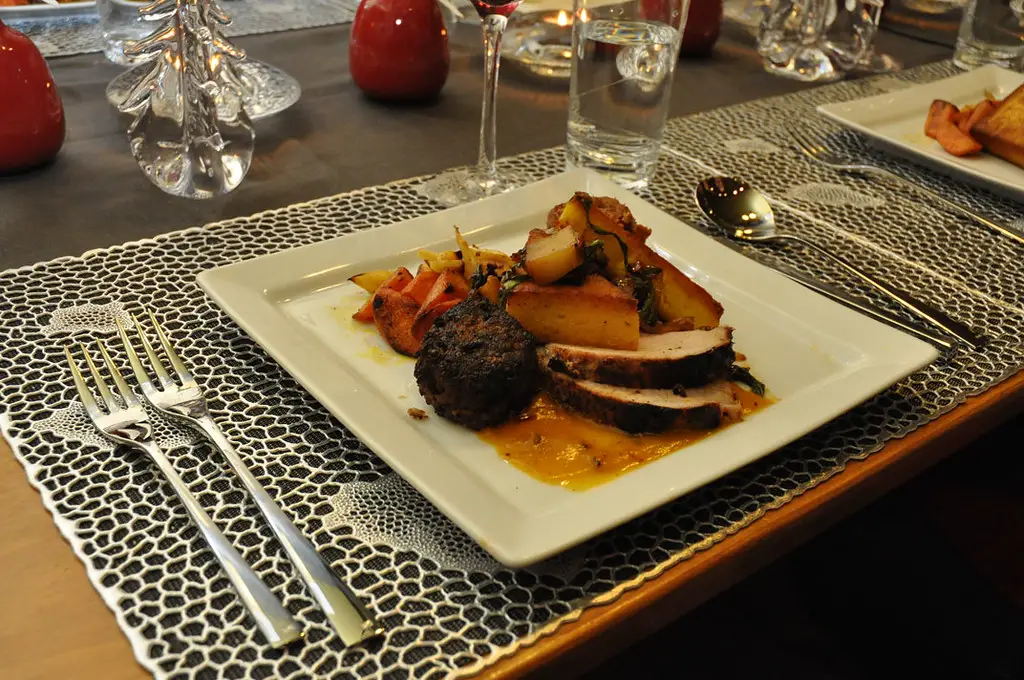
Braising is a cooking technique that involves cooking meat slowly in a covered pot with liquid. This technique is perfect for cooking pork loin, which can be tough if not cooked properly. Braising allows the meat to cook slowly and become tender, resulting in a juicy and flavorful dish. Here are the essential ingredients you need for braising pork loin.
Aromatics and Herbs
Aromatics and herbs are essential for adding flavor to your braised pork loin. The following are some examples of aromatics and herbs that you can use:
- Garlic: Garlic is a staple in many braised pork loin recipes. It adds a pungent and slightly sweet flavor that complements the pork.
- Onions: Onions are another staple in braised pork loin recipes. They add a sweet and savory flavor that complements the pork.
- Carrots and Celery: Carrots and celery add a subtle sweetness and earthiness to the dish.
- Fresh Herbs: Fresh herbs like rosemary, thyme, and parsley add a fresh and aromatic flavor to the dish.
Liquids for Braising
The liquid you use for braising is also an essential ingredient. The following are some examples of liquids that you can use:
- Broth: Broth is a popular choice for braising pork loin. It adds a savory and slightly salty flavor to the dish.
- Wine: Wine is another popular choice for braising pork loin. It adds a fruity and slightly acidic flavor to the dish.
- Apple Cider: Apple cider is a great choice for adding a sweet and tangy flavor to the dish.
- Soy Sauce: Soy sauce adds a salty and slightly sweet flavor to the dish.
When braising pork loin, it’s important to use enough liquid to cover the meat. This will ensure that the meat stays moist and tender throughout the cooking process. You can also add vegetables like potatoes, carrots, and onions to the pot to create a complete one-pot meal.
Preparation Techniques
Trimming the Pork Loin
Before braising the pork loin, it is essential to trim any excess fat from the meat. This will prevent the meat from becoming too greasy and will ensure that the flavors of the braising liquid are not overwhelmed by the fat. To trim the pork loin, use a sharp knife to remove any visible fat. Be sure to leave a thin layer of fat on the meat to keep it moist during cooking.
Marinating for Flavor
Marinating the pork loin before braising can add an extra layer of flavor to the dish. A simple marinade can be made with olive oil, garlic, herbs, and spices. To marinate the pork loin, place it in a large resealable plastic bag with the marinade and refrigerate for at least 2 hours, or overnight for best results. When ready to braise the pork loin, remove it from the marinade and pat it dry with paper towels.
Another way to add flavor to the braised pork loin is to sear it before braising. Searing the meat in a hot pan before braising will create a crust on the outside of the meat, which will add depth and complexity to the dish. To sear the pork loin, heat a heavy-bottomed pan over high heat and add a tablespoon of oil. Once the oil is hot, add the pork loin and cook for 2-3 minutes on each side until browned.
In summary, trimming the pork loin and marinating it before braising can enhance the flavor and texture of the dish. Searing the meat before braising can also add an extra layer of flavor. By following these simple preparation techniques, you can create a delicious and tender braised pork loin that is sure to impress.
Cooking Methods
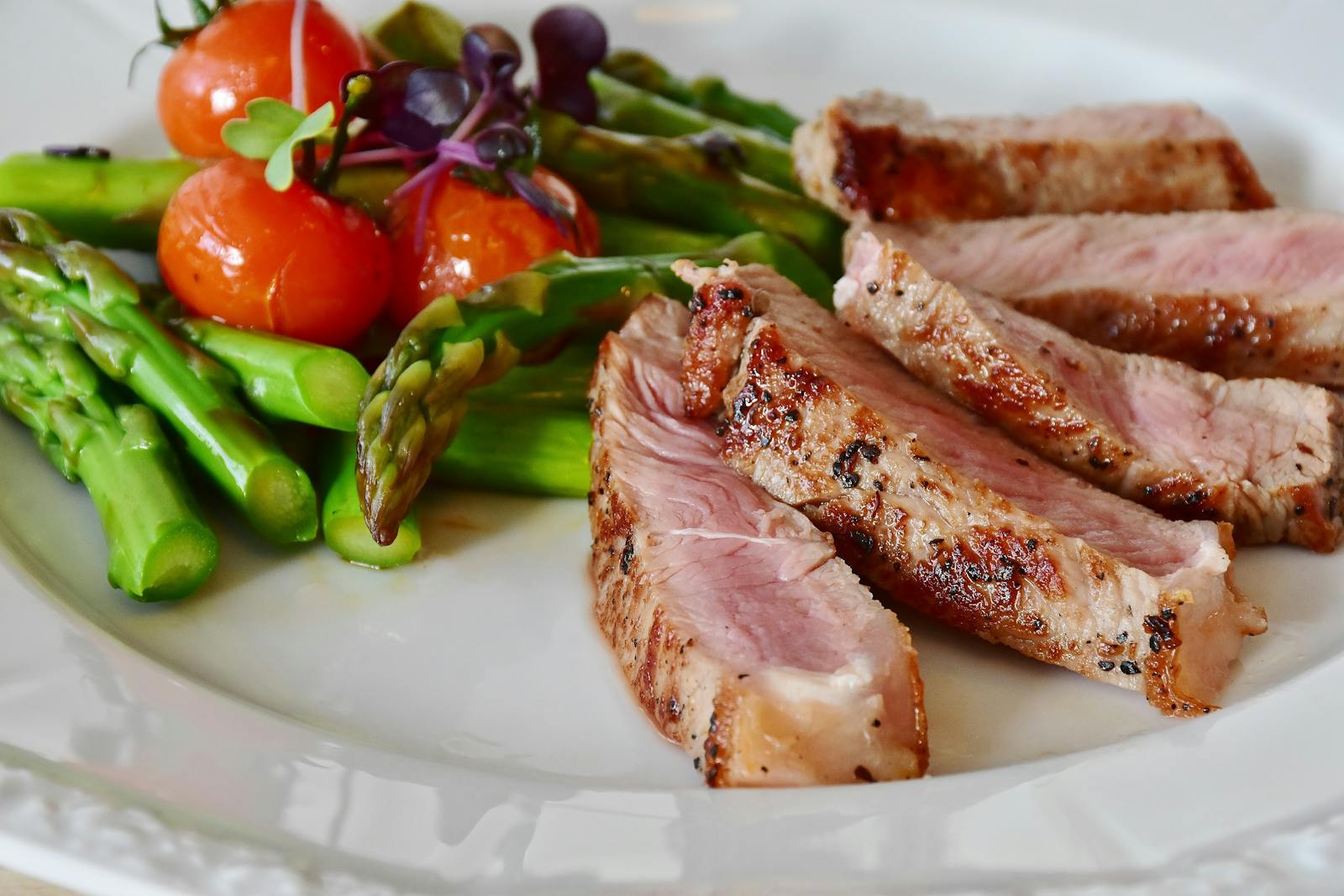
When it comes to cooking Braised Pork Loin, there are two main methods you can use: searing the meat and low and slow cooking. Both methods have their own advantages and disadvantages, and which one you choose will depend on your personal preference and the time you have available.
Searing the Meat
Searing the meat is the first step in the braising process, and it involves cooking the pork loin quickly over high heat to create a crust on the outside. This helps to lock in the juices and flavor of the meat, and also adds color and texture to the final dish.
To sear the meat, heat a large Dutch oven or heavy-bottomed pot over medium-high heat, add a small amount of oil, and then add the pork loin. Cook the pork for about 3-4 minutes per side, or until it is golden brown and crispy on the outside. Once the pork is seared, you can then add your braising liquid and other ingredients, and continue with the low and slow cooking process.
Low and Slow Cooking
The second method for cooking Braised Pork Loin is low and slow cooking. This involves cooking the pork at a low temperature for a long period of time, usually several hours, until it is tender and juicy.
To cook the pork low and slow, preheat your oven to 325°F, and then add your braising liquid and other ingredients to the pot with the seared pork loin. Cover the pot with a lid, and then transfer it to the oven. Cook the pork for 2-3 hours, or until it is tender and falls apart easily with a fork.
Low and slow cooking is a great method for Braised Pork Loin because it allows the flavors of the braising liquid and other ingredients to infuse into the meat, resulting in a rich and flavorful dish. It also helps to break down the connective tissue in the meat, making it tender and juicy.
Cookware and Kitchen Tools
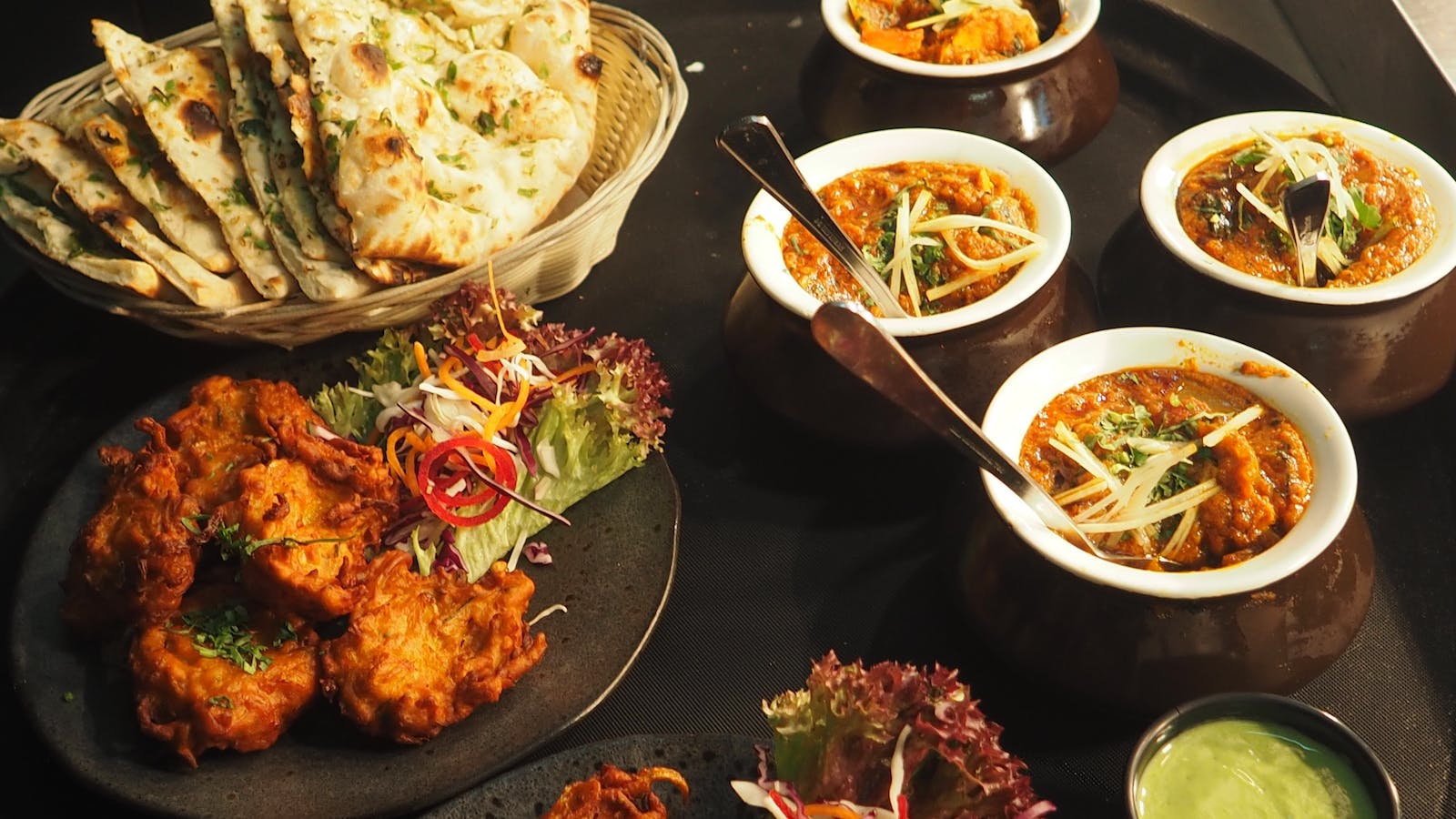
When it comes to cooking Braised Pork Loin, having the right cookware and kitchen tools can make all the difference. Here are some tips on what you’ll need to get started.
Choosing the Right Pot
To make Braised Pork Loin, you’ll need a pot that is large enough to hold the meat and the liquid. A Dutch oven is a popular choice for braising, as it is heavy and distributes heat evenly. Look for a pot that is made of a heavy material, such as cast iron or stainless steel, and has a tight-fitting lid. This will help to keep the moisture in and prevent the meat from drying out.
Meat Thermometers and Other Tools
To ensure that your Braised Pork Loin is cooked to perfection, you’ll need a meat thermometer. This will help you to check the internal temperature of the meat, which should be around 145°F. You may also want to have a pair of tongs on hand to help you handle the meat, as well as a slotted spoon to remove any excess fat or impurities from the liquid.
Other tools that can come in handy when making Braised Pork Loin include a sharp knife for trimming the meat, a cutting board, and measuring cups and spoons for measuring out the ingredients. It’s also a good idea to have a timer on hand, so you can keep track of how long the meat has been cooking.
By having the right cookware and kitchen tools, you can ensure that your Braised Pork Loin turns out perfectly every time.
Serving Suggestions
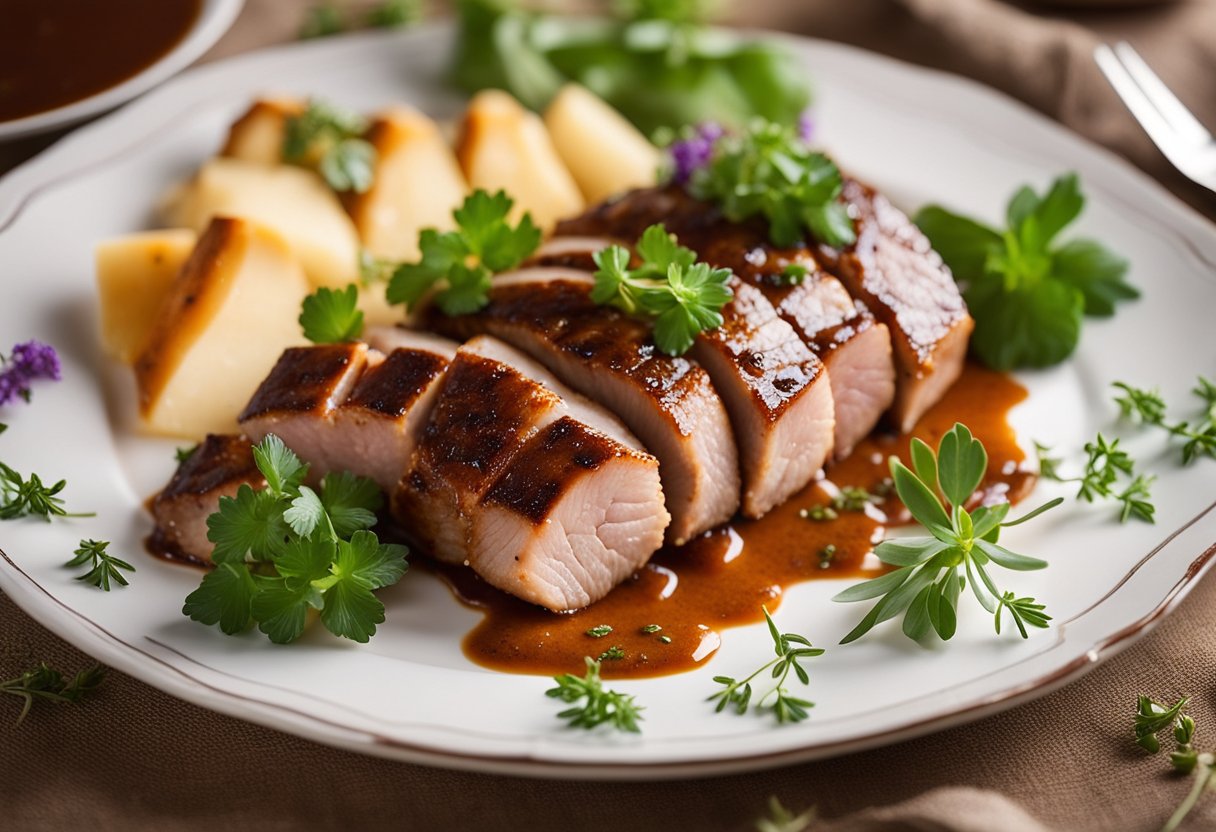
Plating Techniques
When it comes to serving braised pork loin, presentation is key. You can choose to slice the pork loin and fan it out on a plate, or you can leave it whole and serve it family-style. If you decide to slice it, make sure to cut against the grain to ensure maximum tenderness. Another option is to shred the pork and serve it on a platter with the braising liquid drizzled over the top. This is a great option for tacos or sandwiches.
Side Dishes
Braised pork loin pairs well with a variety of side dishes. Roasted vegetables such as carrots, parsnips, and Brussels sprouts are a classic choice. You can also serve it with mashed potatoes, sweet potato puree, or polenta. For a lighter option, try a simple green salad with a tangy vinaigrette. If you want to add some sweetness to the meal, roasted apples or pears are a great choice. Finally, don’t forget to serve some crusty bread to soak up all of the delicious braising liquid.
Overall, serving braised pork loin is a great way to impress your guests or elevate your weeknight dinner. With these plating and side dish suggestions, you’re sure to create a meal that is both beautiful and delicious.
Wine Pairing and Drinks

When it comes to pairing wine with Braised Pork Loin, there are a few options that can enhance the flavors of the dish. Here are some suggestions for wine pairings and refreshing beverage options to enjoy with your Braised Pork Loin.
Red Wine Pairings
Red wine is a classic pairing for Braised Pork Loin. The dish’s rich and savory flavors can be balanced with a full-bodied, fruity red wine. Some good options include:
- Pinot Noir: This wine has a light to medium body and a fruity flavor that pairs well with the richness of the Braised Pork Loin.
- Merlot: With its velvety texture and smooth tannins, Merlot can be a great choice to balance out the dish’s savory flavors.
- Cabernet Sauvignon: This full-bodied wine has a bold flavor that can hold up to the rich flavors of the Braised Pork Loin.
Refreshing Beverage Options
If you prefer something other than wine, there are plenty of refreshing beverage options that can pair well with Braised Pork Loin. Here are a few suggestions:
- Sparkling Water: The effervescence of sparkling water can help cleanse your palate between bites, making it a perfect pairing for the rich flavors of Braised Pork Loin.
- Iced Tea: A cold glass of iced tea can be a refreshing complement to the savory flavors of the dish. Try a black tea with a touch of lemon for a bright and citrusy flavor.
- Lemonade: The tartness of lemonade can cut through the richness of the Braised Pork Loin, making it a refreshing and flavorful pairing.
Overall, there are plenty of options to choose from when it comes to pairing wine and drinks with Braised Pork Loin. Whether you prefer a full-bodied red wine or a refreshing glass of iced tea, there’s something for everyone to enjoy.
Storing and Reheating
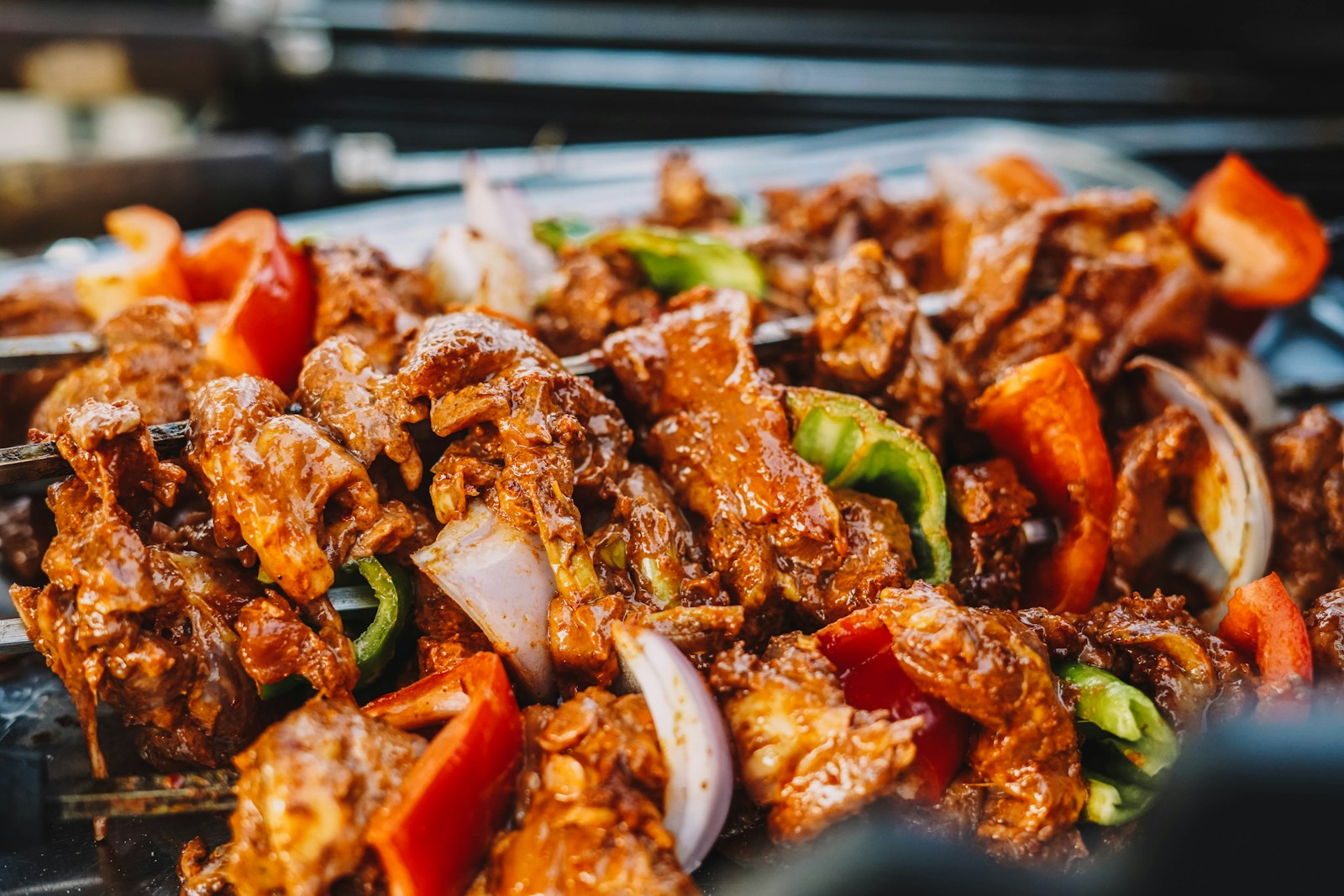
When it comes to storing and reheating braised pork loin, it’s important to keep in mind a few key factors to ensure the best quality and taste. Here are some tips for storing and reheating your braised pork loin.
Proper Storage
The first step to ensuring the best quality when reheating braised pork loin is to store it properly. You should always store your pork loin in an airtight container or wrap it tightly in aluminum foil before refrigerating it. This will help to prevent any air from getting in and drying out the meat, which can lead to a loss of flavor and texture.
It’s also important to refrigerate your pork loin within two hours after cooking to prevent the growth of harmful bacteria. If you plan on storing your pork loin for more than a few days, you may want to consider freezing it instead. Make sure to wrap it tightly in plastic wrap or aluminum foil before placing it in the freezer.
Reheating for Best Quality
When reheating your braised pork loin, there are a few methods you can use to ensure the best quality. One of the most effective methods is to use an oven to reheat the pork loin slowly. This will help to preserve the moisture in the meat and prevent it from drying out.
To reheat your pork loin in the oven, preheat your oven to 250°F and place the pork loin in a baking dish. Cover the dish with aluminum foil and add a splash of broth or water to keep the meat moist. Heat the pork loin for about 20 minutes, or until it reaches an internal temperature of 145°F. This method ensures that the pork loin stays juicy and flavorful.
Another option is to reheat your pork loin in the microwave, but this method can sometimes result in dry, overcooked meat. If you do choose to use the microwave, make sure to cover the dish with a damp paper towel to help retain moisture. Heat the pork loin on medium power for 1-2 minutes, or until it is heated through.
Overall, by following these tips for storing and reheating your braised pork loin, you can ensure that it stays moist, tender, and delicious.
Nutritional Information
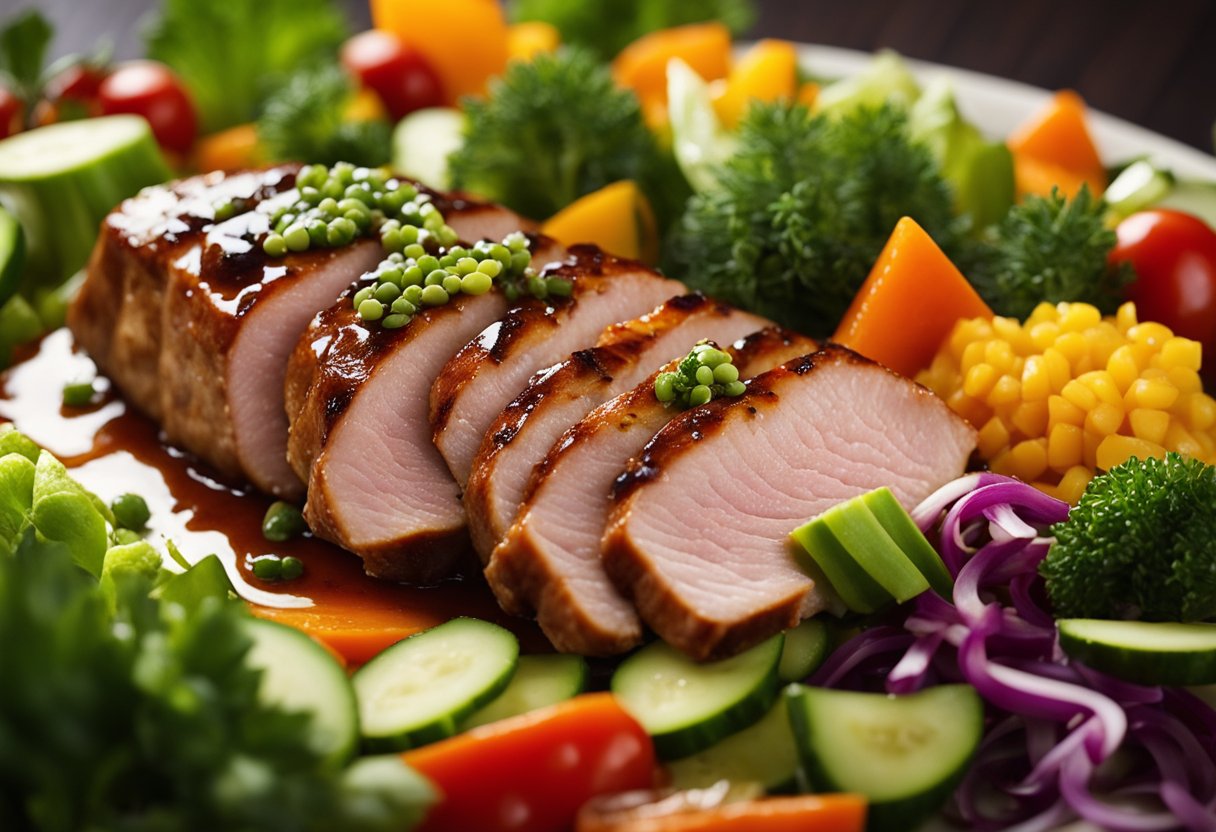
Braised pork loin is a delicious and flavorful meat dish that is rich in protein and other essential nutrients. Here is a breakdown of the nutritional information for braised pork loin:
Calories and Macronutrients
A 3-ounce serving of braised pork loin contains approximately 173 calories. It is a good source of protein, providing 28.83% of the daily value (DV) for protein. However, it is important to note that braised pork loin is also high in fat, with 9.2% of the DV for fat. Therefore, it is recommended to consume braised pork loin in moderation as part of a balanced diet.
Vitamins and Minerals
Braised pork loin is a good source of several vitamins and minerals, including iron, phosphorus, and zinc. A 3-ounce serving of braised pork loin provides approximately 10% of the DV for iron, 20% of the DV for phosphorus, and 15% of the DV for zinc. These nutrients play important roles in maintaining healthy bones, teeth, and red blood cells.
Other Nutrients
Braised pork loin also contains other important nutrients, including niacin, vitamin B6, and selenium. Niacin and vitamin B6 are essential for proper nervous system function and energy metabolism, while selenium is important for immune system function and thyroid health. A 3-ounce serving of braised pork loin provides approximately 30% of the DV for niacin, 15% of the DV for vitamin B6, and 35% of the DV for selenium.
Overall, braised pork loin is a nutritious and tasty meat dish that can be enjoyed as part of a healthy diet. However, it is important to consume it in moderation and pair it with a variety of other nutrient-dense foods to ensure a well-balanced diet.
Troubleshooting Common Issues
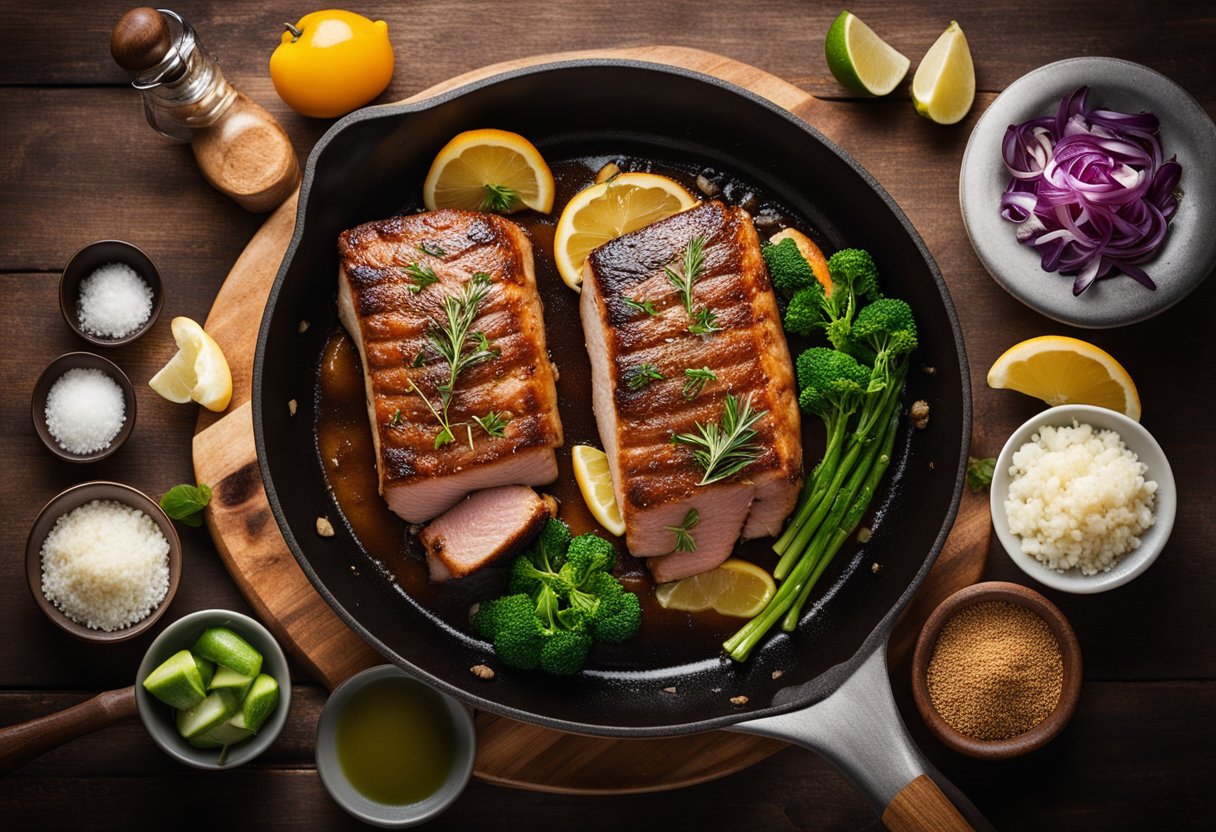
If you’re having trouble with your Braised Pork Loin, don’t worry! Here are some common issues and how to avoid them:
Avoiding Dry or Tough Pork Loin
One of the most common issues with braised pork loin is that it can come out dry or tough. This can happen if the pork is overcooked or if there isn’t enough liquid in the pot. Here are a few tips to avoid this:
- Make sure you’re using enough liquid. You want the liquid to come about halfway up the pork loin.
- Don’t overcook the pork. It should be cooked until it’s tender, but not so long that it becomes dry and tough. The internal temperature should be around 145°F (63°C).
- If you’re using a boneless pork loin, consider tying it with kitchen twine to help it retain its shape and cook more evenly.
Balancing Flavors
Another issue that can come up with braised pork loin is that the flavors can be unbalanced. Here are some tips to help you get the right balance of flavors:
- Taste the sauce as you go. You can always adjust the seasoning as needed. Salt and pepper are a good starting point, but you may also want to add other seasonings like herbs or spices.
- If the sauce is too sweet, you can add a splash of vinegar or lemon juice to help balance it out. If it’s too sour, you can add a bit of honey or sugar.
- Don’t be afraid to experiment with different flavors. Braised pork loin can be a great canvas for a variety of different flavors, so feel free to get creative and try new things.
By following these tips, you should be able to avoid some of the most common issues that can come up when making braised pork loin. Remember to keep an eye on the cooking time and the liquid level, and taste the sauce as you go to make sure the flavors are balanced.
Advanced Techniques and Variations
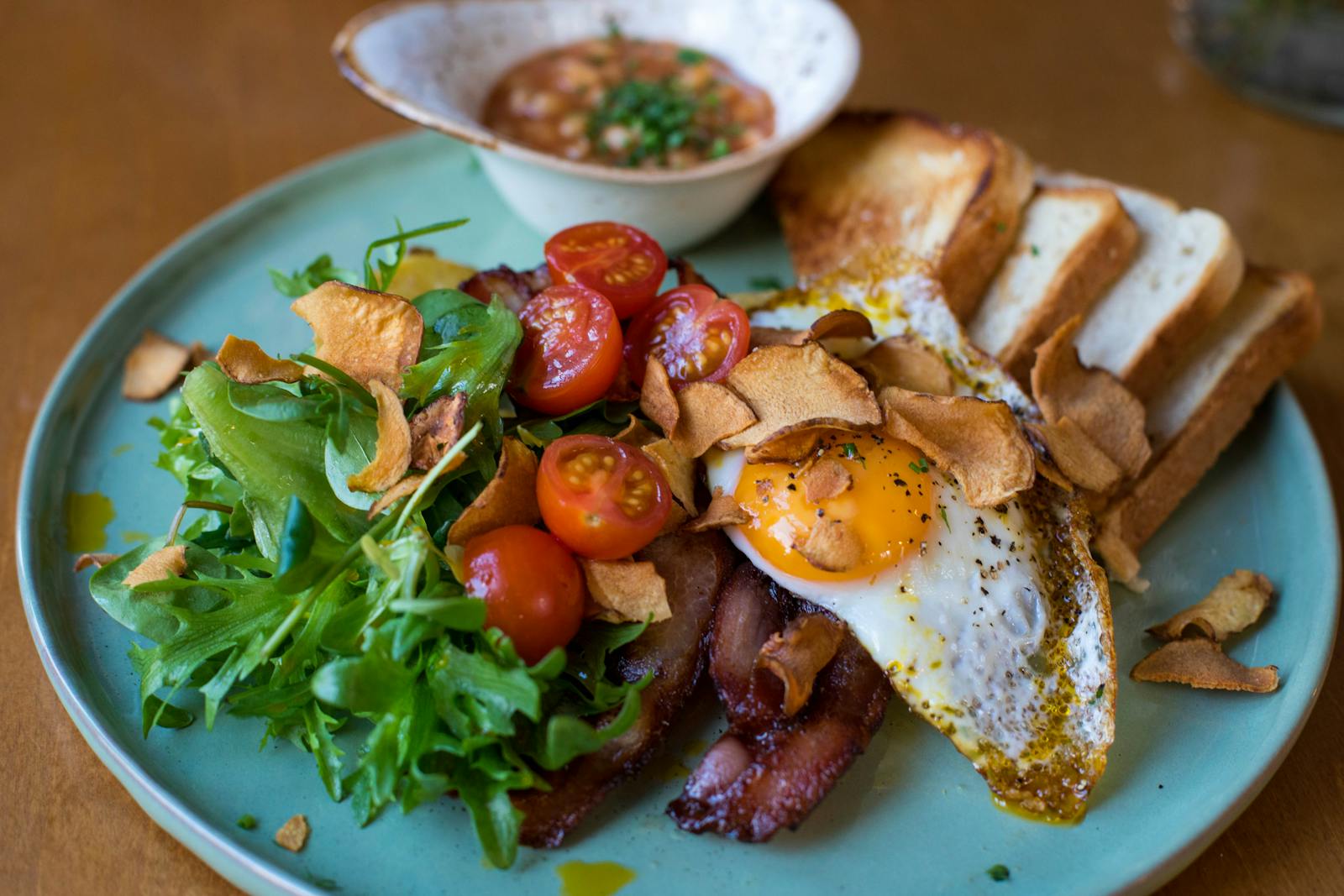
Braised pork loin is a versatile dish that can be customized to suit your taste. Here are some advanced techniques and variations to take your braised pork loin to the next level.
Incorporating International Flavors
One way to add some variety to your braised pork loin is to incorporate international flavors. For example, you can add some Asian-inspired flavors by using soy sauce, ginger, and star anise. Alternatively, you can add some Mexican-inspired flavors by using cumin, chili powder, and oregano. Experiment with different spice blends to find the flavor profile that suits you best.
Here is an example recipe for an Asian-inspired braised pork loin:
| Ingredients |
|---|
| 2 lb pork loin |
| 1/4 cup soy sauce |
| 1/4 cup rice vinegar |
| 1/4 cup brown sugar |
| 1/4 cup chicken broth |
| 2 cloves garlic, minced |
| 1 inch piece ginger, peeled and grated |
| 2 star anise |
| 1 cinnamon stick |
- Preheat your oven to 325°F.
- Pat the pork loin dry with paper towels and season it generously with salt and pepper.
- In a large Dutch oven or heavy-bottomed pot, heat the olive oil over medium-high heat.
- Sear the pork loin on all sides until golden brown, about 3-4 minutes per side.
- In a small bowl, whisk together the soy sauce, rice vinegar, brown sugar, chicken broth, garlic, and ginger.
- Pour the mixture over the pork loin and add the star anise and cinnamon stick.
- Cover the Dutch oven and transfer it to the oven.
- Braise the pork loin for 2-3 hours, or until it is tender and cooked through.
Experimenting with Cooking Times
Another way to customize your braised pork loin is to experiment with cooking times. The longer you braise the pork loin, the more tender it will become. However, if you braise it for too long, it may become mushy and lose its texture.
Here is an example recipe for a slow-cooked braised pork loin:
| Ingredients |
|---|
| 2 lb pork loin |
| 1 onion, chopped |
| 2 carrots, chopped |
| 2 celery stalks, chopped |
| 2 cloves garlic, minced |
| 2 cups chicken broth |
| 1 cup red wine |
| 2 bay leaves |
| 1 tsp dried thyme |
| Salt and pepper |
- Preheat your oven to 275°F.
- In a large Dutch oven or heavy-bottomed pot, heat the olive oil over medium-high heat.
- Sear the pork loin on all sides until golden brown, about 3-4 minutes per side.
- Remove the pork loin from the pot and set it aside.
- Add the onion, carrots, celery, and garlic to the pot and sauté until they are softened.
- Add the chicken broth, red wine, bay leaves, thyme, salt, and pepper to the pot.
- Return the pork loin to the pot and bring the liquid to a simmer.
- Cover the Dutch oven and transfer it to the oven.
- Braise the pork loin for 4-5 hours, or until it is fork-tender.
Experiment with different cooking times to find the texture that you prefer. Remember to adjust the cooking time based on the size of your pork loin. A larger pork loin will require a longer cooking time than a smaller one.
Frequently Asked Questions
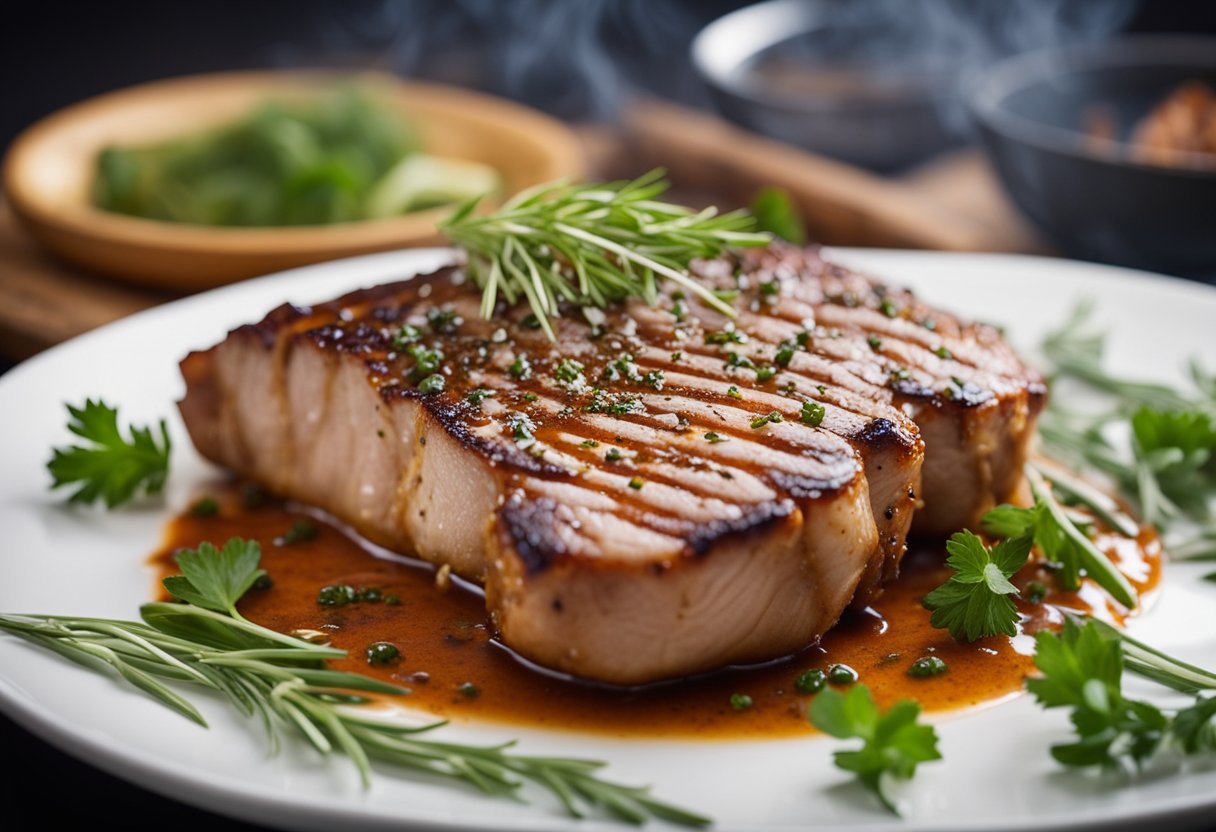
What are the best practices for braising pork loin in a Dutch oven?
Braising pork loin in a Dutch oven is a great way to achieve tender and juicy meat. To do this, first, preheat your oven to 325°F. Then, pat the pork loin dry with paper towels and season it generously with salt and pepper. Next, heat up some oil in a Dutch oven over medium-high heat. Once hot, sear the pork loin on all sides until it is browned. Remove the pork loin from the Dutch oven and set it aside. Add some chopped onions, garlic, and vegetables to the Dutch oven and sauté them until they are softened. Then, add some liquid, such as chicken or beef broth, red wine, or apple cider, and scrape the bottom of the Dutch oven to release any browned bits. Add the pork loin back to the Dutch oven and cover it with a lid. Braise the pork loin in the oven for about 2-3 hours or until it is tender and cooked through.
Can you achieve tender pork loin by braising it in the oven, and what are the key steps?
Yes, braising is an excellent way to achieve tender pork loin. The key steps are to sear the pork loin on all sides until it is browned, then sauté some chopped onions, garlic, and vegetables until they are softened. Add some liquid, such as chicken or beef broth, red wine, or apple cider, and scrape the bottom of the Dutch oven to release any browned bits. Add the pork loin back to the Dutch oven and cover it with a lid. Braise the pork loin in the oven for about 2-3 hours or until it is tender and cooked through.
How can I incorporate Asian flavors into braised pork loin?
To incorporate Asian flavors into braised pork loin, use ingredients such as soy sauce, hoisin sauce, ginger, garlic, and star anise. You can also add vegetables such as bok choy, shiitake mushrooms, and bamboo shoots. Serve the braised pork loin with steamed rice or noodles for a complete meal.
What are the recommended settings for braising pork loin in a slow cooker?
To braise pork loin in a slow cooker, first, sear the pork loin on all sides until it is browned. Then, add some chopped onions, garlic, and vegetables to the slow cooker. Place the pork loin on top of the vegetables. Add some liquid, such as chicken or beef broth, red wine, or apple cider. Cover the slow cooker with a lid and cook on low for 6-8 hours or on high for 3-4 hours, or until the pork loin is tender and cooked through.
How do you braise a pork loin on the stove top to ensure it remains moist?
To braise a pork loin on the stove top, first, sear the pork loin on all sides until it is browned. Then, add some chopped onions, garlic, and vegetables to the pot. Add some liquid, such as chicken or beef broth, red wine, or apple cider. Cover the pot with a lid and simmer on low heat for about 2-3 hours or until the pork loin is tender and cooked through.
What vegetables pair well with braised pork loin for a balanced dish?
Vegetables that pair well with braised pork loin include carrots, celery, onions, garlic, potatoes, sweet potatoes, parsnips, turnips, and Brussels sprouts. These vegetables are hearty and can stand up to the long cooking time required for braising.
External Links

If you want to learn more about braised pork loin, there are many helpful resources available online. Here are a few external links that you may find useful:
- Bon Appétit’s recipe for braised pork loin with apples and onions is a great place to start. This recipe is simple and easy to follow, and it yields a delicious and flavorful dish that is perfect for a cozy dinner at home.
- If you’re looking for a more detailed guide to braising pork loin, check out Serious Eats’ Ultimate Guide to Pork Loin. This comprehensive article covers everything from selecting the right cut of meat to cooking techniques and flavor combinations.
- For a more international take on braised pork loin, try David Lebovitz’s recipe for Chinese-style braised pork belly. This recipe features bold flavors and a rich, succulent texture that is sure to impress.
- Finally, if you’re looking for some inspiration for side dishes to serve with your braised pork loin, check out Food & Wine’s list of 50 Best Side Dishes for Pork. From classic mashed potatoes to more adventurous options like roasted fennel and citrus salad, this list has something for everyone.
By exploring these external links, you’ll be well on your way to mastering the art of braised pork loin. Whether you’re a seasoned cook or a beginner in the kitchen, there’s always something new to learn and discover.
More FAQs
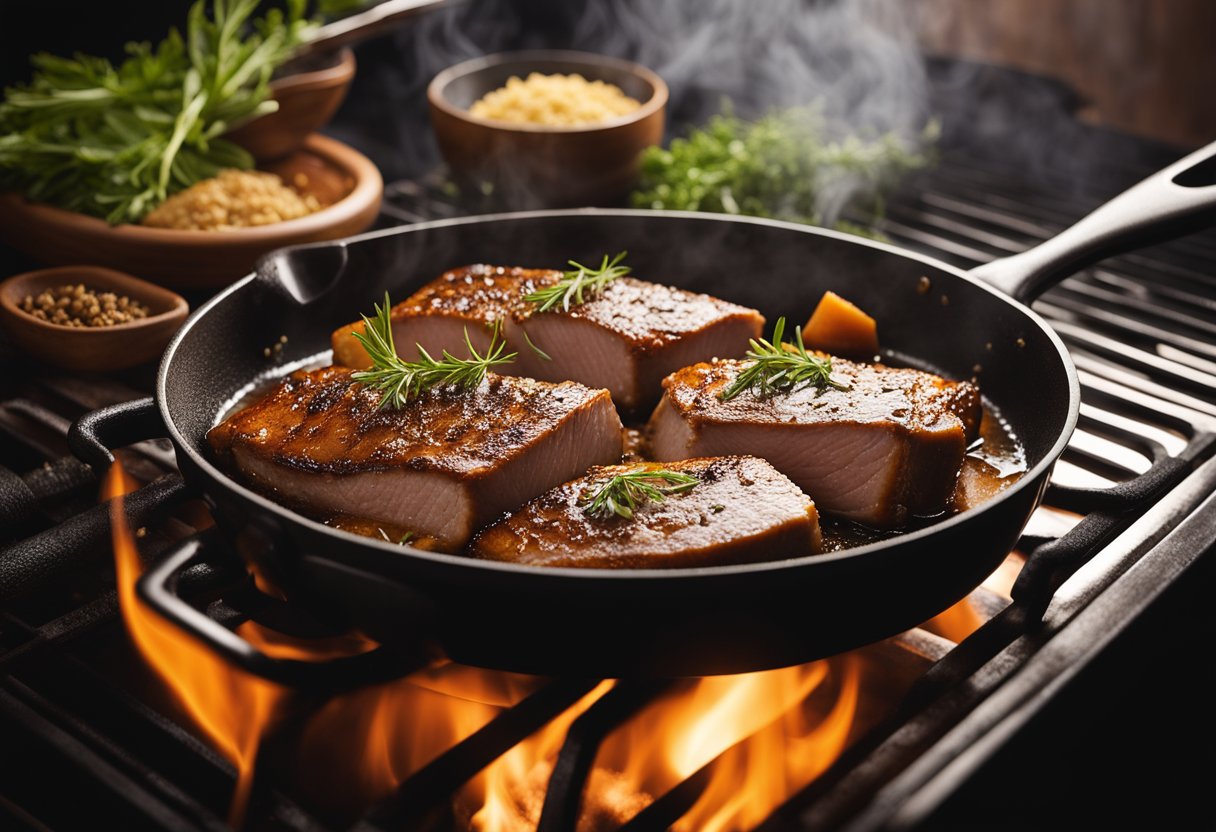
Here are some more frequently asked questions about braised pork loin:
Is pork loin good for braising?
Yes, pork loin is a great cut of meat for braising. It is lean and tender, and it benefits from the slow cooking process of braising. Braising helps to break down the connective tissue in the meat, resulting in a tender and flavorful dish.
Which part of pork is best for braising?
While pork loin is a great cut for braising, other parts of the pig are also suitable. Pork shoulder, also known as pork butt, is a popular cut for braising. It has a lot of connective tissue, which breaks down during the braising process, resulting in a tender and flavorful dish.
What is the secret to tender pork loin?
The secret to tender pork loin is to cook it low and slow. This means cooking it at a low temperature for a long period of time. The low temperature helps to break down the connective tissue in the meat, resulting in a tender and juicy dish. Adding liquid, such as broth or wine, to the braising liquid also helps to keep the pork moist and tender.
Does braising pork longer make it more tender?
Braising pork for a longer period of time can make it more tender, but it is important not to overcook it. Overcooking can cause the meat to become dry and tough. It is best to cook the pork until it is just tender, and then let it rest for a few minutes before slicing. This allows the juices to redistribute throughout the meat, resulting in a more flavorful and tender dish.
Conclusion
In conclusion, braised pork loin is a delectable dish that offers tender, succulent meat with rich, flavorful gravy. The slow cooking process allows for the flavors to meld together, resulting in a satisfying and hearty meal that is sure to please the palate.
Whether served with roasted vegetables, mashed potatoes, or a side of rice, braised pork loin is a versatile and comforting dish that is perfect for any occasion.

Braised Pork Loin
Ingredients
- 2 lbs pork loin, boneless
- 2 tablespoons olive oil
- 1 onion, finely chopped
- 3 cloves garlic, minced
- 1 carrot, peeled and sliced
- 1 celery stalk, sliced
- 1 cup chicken or beef broth
- 1 cup red wine
- 2 tablespoons tomato paste
- 2 teaspoons dried thyme
- 2 teaspoons dried rosemary
- Salt and pepper to taste
Instructions
- Preheat your oven to 325°F (163°C).
- Season the pork loin with salt and pepper.
- In a large ovenproof pot, heat olive oil over medium-high heat. Sear the pork loin until browned on all sides. Remove and set aside.In the same pot, add chopped onion, garlic, carrot, and celery. Cook until vegetables are softened.
- Stir in tomato paste, thyme, and rosemary, cooking for an additional 2 minutes.
- Pour in the red wine and broth, scraping the bottom of the pot to release any browned bits.
- Return the seared pork loin to the pot. Cover and transfer to the preheated oven.
- Braise for 1.5 to 2 hours or until the pork is tender and easily pulls apart with a fork.
- Once done, let it rest for 10 minutes before slicing.

